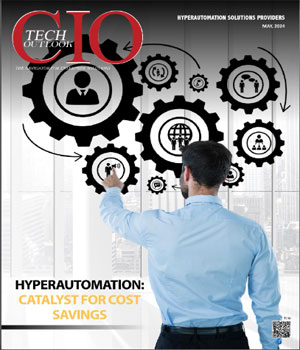
CIOTechOutlook >> Magazine >> September - 2016 issue
Systematizing Knowledge for Better Outcomes
By
 Barriers in Meeting Customer Expectations
Barriers in Meeting Customer ExpectationsNowadays, many organizations face challenges when trying to meet customer expectations of impeccable service, anywhere and anytime. Not only could these expectations translate into losing business from the customers themselves who had a bad experience, but it could also have a wider effect.In today’s world, customers post poor service experiences on Twitter or other social media platforms, and these Tweets and posts tend to have a large audience. They harm the company’s sales and reputation. Therefore, instead of educating their customers, organizations should adapt themselves to today’s changing world. To do that, companies need a knowledge management system, alongside other customer service systems, that can provide them with tools to improve their sales and customer service, make their work more efficient and reduce their operational costs.
Leveraging Technologies
Today, the most advanced knowledge management systems know how to structure business knowledge into a central business container, which can then be consumed in real-time by various channels: in the office, at the store, in the field or through digital channels.
Template-based management of the content provides consistency of knowledge presentation, smart searching and indexing capabilities, and the ability to conduct comparisons. These enable agents to work faster and more accurately. Agents are able to quickly and easily search or navigate through large volumes of information, which may reside in various formats, and gain access to the answers they need in real time. Instant knowledge updates and complete and consistent information further improves operational efficiency, reduces overall customer interaction costs and increases profitability.
Organizing Knowledge
The right knowledge management system can provide organizations with tools to produce higher sales conversions, lower customer churn, increase employee productivity, lower operational costs and increase customer satisfaction and loyalty.
By organizing structured knowledge into one central and unified source, knowledge becomes accessible to users from all company departments: sales, customer service, marketing, training, product management, and IT. This results in reduced training times, improved KPIs, calls diverted to online channels, shorter execution time and a unified customer experience.
Improving Knowledge Abilities
Implementing a new knowledge system can be challenging. That’s why it’s important to choose a professional provider that has experience and recommendations and will work hand in hand with you. By putting in a one-time managed effort, organizations can maximize on their existing knowledge capital and resources, giving them a huge advantage in their market.
CXO Insights
Digitalization - the critical enabler for...
By Rajesh Ramachandran, Global Chief Digital Officer - Process Automation & ABB Ability, ABB
Automating A Linear Process Towards...
By Madhav Srinivasan, Chief Financial Officer, Hunton Andrews Kurth LLP
Why Security Is More Pivotal Than Ever In The...



